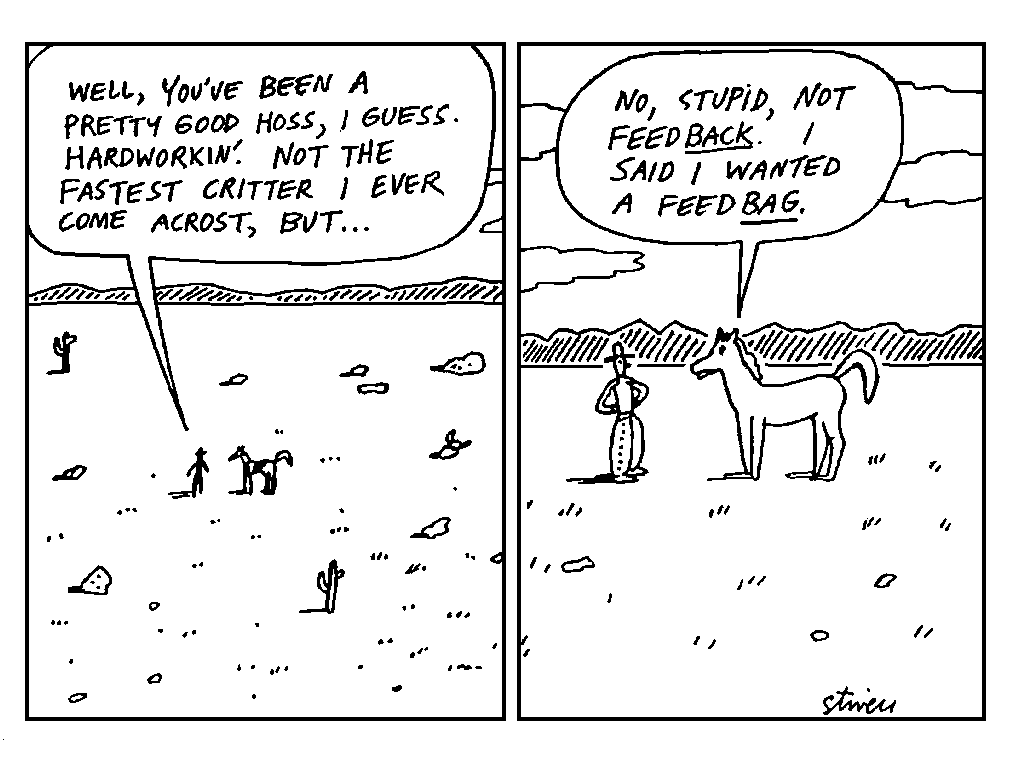by Louise Brace
Critique, or criticism, feedback or evaluation? As a team leader you have to be constructive in your approach to giving feedback. Teams and individuals need to appreciate why they are receiving feedback, in a way that makes them take immediate action and without causing too much of an ‘ouch’ factor.

And how do we give constructive and immediate feedback to workers in the age of remote working and flextime, when we are often not in the same room, at the same time, as our employees and coworkers?
As our office environment and the time we spend in a fixed office evolve, so must the way we offer feedback to our employees and how we appraise their work. We are moving toward a results-only work environment, where it doesn’t matter where we work, or how we achieve results, just as long as we achieve the agreed results that have been pre-defined within the team.
Let’s take a look at the evolving feedback process and the most effective way to give feedback in today’s work environment.
The Performance Appraisal
In the good old days, rewind… in the not so good, and in some cases, not so old days. Managers sat you down in a room with a form and a frown every six or 12 months and ran you through your best and worst moments of the year. This was generally accompanied with confirmation of whether or not you had earned your bonus.
With this system, there is little or no immediate feedback or praise. Immediate feedback being saved for a ticking off for being late, or talking in work hours – god forbid! Or praise for hitting a target. Great! But what about the work that got you there?
Managers hate performance appraisals nearly as much as their employees. In fact it comes second-only to firing employees, in their least favourite tasks list. So maybe it’s time to ditch the performance appraisal if you’re organization is still using this technique?
The Praise Sandwich
Also labelled the criticism sandwich, this technique follows the ideal that if you sandwich feedback between praise, you’ll soften the blow of the real feedback; when that feedback is unfavourable. There’s two issues with this technique:
Firstly, when delivering critique, no matter how much you butter up your employees first… butter them up, sandwich… get it? Ok, ok… They’ll still read the criticism in between the positive comments and if it’s not delivered well, it won’t improve performance. This often occurs with professional and experienced workers, who appreciate straight-forward and honest feedback and will straight-away see through the praise, directly to the critique.
Secondly, if your bread and butter praise is over positive, some employees, especially novices who may feel insecure in their position, will miss the critique in the middle and focus only on the praise. And in this case, nothing will be learned and no action taken to improve the matter in hand.
This technique can work to a degree if you sandwich ‘constructive criticism’ between positive feedback, in a way that compels the appraised to action.
But there’s a better way still…
The Feedback Wrap
Jurgen Appelo in his book #Workout, discusses the Feedback Wrap technique. Forget the sandwich, it’s so 20th century. In the 21st century, it’s all about the wrap!
Check out Jurgen’s Feedback Wrap recipe for successful and constructive feedback!
Ingredient One: Describe your context

The purpose of all good feedback is to improve performance and results. This can be through praise of good work, or constructive feedback when there is an issue that needs to be resolved.
To start your Feedback Wrap you must set your scene. Explain the elements which have influenced your feedback: the environment you find yourself in, state of mind, and the expectations you had with a specific task or project.
Example (and I’m highlighting the scene setting): I’m sitting in a hotel room reading the monthly email newsletter, which I just received from Jennifer. I wanted to give you immediate feedback, as I think this must be a test-version and it would be great to make some changes before we send it out to general public. Maybe it’s my tired eyes after a long day at a conference, but the design doesn’t appear to be so mobile-friendly. I imagine you are working on this as we speak?!
By giving your employees an explication of your personal situation, you are setting the scene for where the feedback has derived from. They may appreciate your situation, even be in a similar one. This builds trust between you and the appraised, and they will appreciate you are taking time out to give them feedback.
Ingredient Two: List your observations

Now you’re adding the ingredients into your wrap. Listing the observations you have made, from the eyes of an experimenter, or outsider. There is no opinion given, no emotional outburst. We just feedback facts and experience.
Example: I have viewed the email newsletter on my laptop and on my mobile and there is a difference in how the mobile version is displayed. It’s important that our design remains consistent across all devices.
This way there can be no argument or justification for why something is the way it is. The plain fact is, we’ve tested it and it’s not delivering our expectations.
Ingredient 3: Express your emotions

You’ve listed the facts and given our observations of the current situation. Now it’s time to express your personal feelings about the situation. As Jurgen says, “Feel free to get emotional!”
This part of feedback is used to connect with the employee involved and to show your concern for the overall result of the project or task. In some cases involving your own emotions can deflect against conflict.
Example: I mentioned in our meeting how important it is to uniform the newsletter design across different devices, so I feel slightly disappointed to see this hasn’t happened. Hopefully you guys are testing it as we speak?
Learn more about giving better feedback at a Management 3.0 Workshop:




I missed this session. Please do let me know if there is any other scheduled sessions. Will be happy to attend.
Thanks,
Durgesh
Hi Durgesh, the next session will be on November 30th and we’ll be discussing Value Stories and Culture Books. Are you subscribed to the Happy Melly newsletter? You should receive an invitation if you are. You can view the Feedback Wraps session on this link: https://www.youtube.com/watch?v=XEZwcNfTzg4&list=PLHXDFUoljQxCLJy7FcLsFIT1P4SMVExFL&index=7
Hi Louise Brace I have not received any invitation yet for Value Stories and Culture Books session.
Hi Durgesh, invitations are on their way out today 🙂
I am very much interested into it, please help me in getting the invite thanks 🙂
If you’re subscribed to Happy Melly newsletter, you’ll definitely receive one. But you can also RSVP through this article. Email link is at the bottom of the page: http://www.happymelly.com/organizational-culture-values/